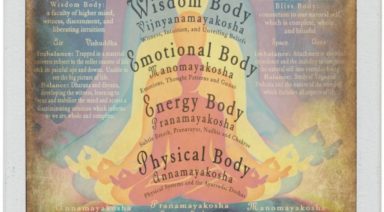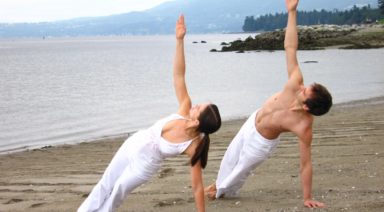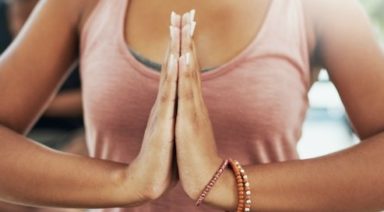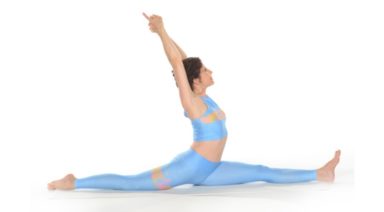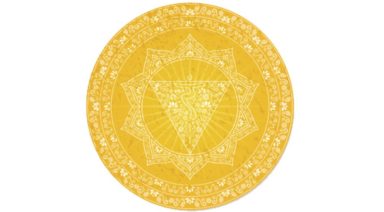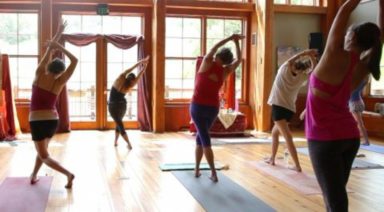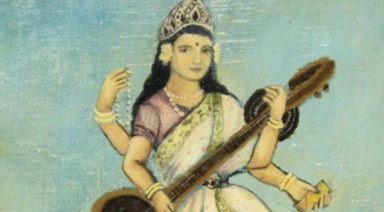What is Ahimsa and How to Practice It in Everyday Life

Whether you’re experienced in yoga or just starting out, integrating the practice of ahimsa in everyday life can lead to wonderful strides. Ahimsa is one of the five yamas, which are the ethical, moral and societal guidelines for yogis. Ahimsa can be distilled into a practice of non-violence in all aspects of life, from the physical to the mental and emotional.
Non-violence is defined by honest compassion and true love. You can achieve this by embracing love: learn to love deeply, and also to be loved. However, this is impossible to do if you choose to ignore or escape from certain traits held in yourself.
How Does Non-Violence Manifest in Daily Life?
To understand how non-violence can manifest in our lives each day, we must first learn how subtle daily actions and responses contain elements of violence. This often happens against ourselves. When our thoughts contain negative responses like disappointment, resentment, or guilt, when we feel shame, we are subtly creating violence. If you can’t forgive someone for something they’ve done against you, or if you can’t forgive yourself for something you’ve done, this is an act of violence because it pushes love away.
Expecting too much of yourself and putting all responsibility in your own hands is a type of violence too, as is expecting that the world will run according to your design. You’re being violent towards yourself and the world at large with these kinds of mindsets. Acting out of our fears is a form of violence to the self. We inflict violence on others daily in subtle ways, but this is simply an outward expression of the war that goes on inside of everyone. For instance, when we resent others, it creates a negative atmosphere. Finding inner peace through ahimsa will in turn allow us to come to peace in interactions with others. This may come as a surprise if you consider yourself a non-violent person. Consider how violence can function in the subtlest of ways. Violence disguises itself well; it manifests in words, actions and even inner thoughts.
Instead, embrace and act from your inner truth. Truth and non-violence are a pair.
Yoga is a great way to access ahimsa in our daily interactions. By practicing yoga daily, you can confront your own inner darkness impartially and with compassion. This then paves the way for transforming negative emotions and tendencies without acting on these feelings.
Yoga creates the avenue to getting in touch with any violence you hold inside of you through non-violent means and therefore to express negativity without hurting anyone, yourself included. Releasing negative energy through positive intentions transcends the negative aspects of yourself, creating peace in the world around you.
How to Incorporate Ahimsa
You can incorporate ahimsa into daily activities. For example, some yogis don’t eat meat. But whatever you decide to do with your diet, you should focus on practicing self love in all that you do.
Another way to bring ahimsa into your life is through compassion. It’s the ability to accept events as they are with an open heart, letting go of reacting in any negative way and replacing those feelings with kindness and acceptance.
Also, move with intention. Consciously put non-violence into action. Instead of letting the limits of your body create stress, make the decision to intentionally respect and even love the limitations your own body has. Perform yoga poses gracefully, but do it without force.
Yoga gives you the chance to practice non-violence in your mind at the same time. While tuning in to your body, simultaneously start to watch as your thoughts form. Cultivate your awareness of your own thoughts to find if there are hints of violence against yourself or others in your life. Awareness doesn’t mean reaction, though. You don’t need to push these thoughts away ” just recognize them. Observe as they come into your consciousness, and then watch as they again leave.
Ahimsa in the Body and Mind
We can understand ahimsa as the being mindful of thoughts. Thoughts naturally move into and out of our minds. The thoughts themselves don’t necessarily cause harm. However, holding onto thoughts and letting them repeat again and again in your mind is what in the end turns into actions or words of violence. Start to practice simply observing your thoughts instead of reacting to them. When you allow yourself to acknowledge and observe, you’ll find that your thoughts slip from your awareness just as easily as they come in.
You can be at the peak of health and still have your thoughts deeply affect your wellbeing. Yes, exercising and eating well are hugely important for your health, but even if you do these things “right,” your thoughts can harm you. Negative thinking sends out messages to the body that trigger the fight or flight response. Thoughts do this even if there’s no outside threat.
The fight or flight response secretes cortisol, which you might know better as the stress hormone. This, in turn, lowers the immune system, and that then makes us more likely to experience physical pain and sickness. And again, it’s not just those pesky bad thoughts we have about ourselves that do this. Jealousy, anger and judgement toward others make us feel bad as well.
That’s where our non-violent thoughts come in. When we think lovingly, these thoughts trigger dopamine’s release into the body. Dopamine is that chemical that makes you feel good and relax. Unlike cortisol, dopamine brings strength to the immune system. It can even cure illness. Those who think of themselves as optimists tend to have stronger immune systems and recover faster from illnesses and injuries. Optimists may even live longer than those who think of themselves as pessimists.
What This Means for You
When you turn your yoga practice into a complete lifestyle, ahimsa can guide your daily interactions with yourself and others. Anyone, regardless of experience, can get frustrated when the physical components of yoga don’t move forward as quickly as planned. Keeping ahimsa in mind as we practice yoga lets us move out of negative thoughts about the body. We can then accept ourselves totally, no matter how flexible, how strong we may be in any given moment.
This translates to all aspects of our lives. In the physical sense, non-violence means not pushing yourself over the edge. You can, of course, still challenge yourself so that you can grow; in fact, you must. But embracing ahimsa means not pushing yourself to harm.
You shouldn’t put much stock in holding a handstand long enough to please your ego if it brings you harm. Likewise, you shouldn’t hold on to resentment or jealousy against yourself or someone else. Embracing ahimsa instead will improve your own well-being as well as those around you.
Everyone holds pain inside themselves, but you can overcome this in a positive way when you practice ahimsa. There is nothing inherently wrong with this; it’s human nature. We must, however, learn to fully experience these negative feeling without reacting negatively to them. This may seem contradictory, but ahimsa leads to a path of peaceful living. By observing but not acting on our natural feelings of pain, hatred, pain and violence will move out of our lives, and doors will open to new understanding.
Let go of expectations of what you should do. Stop clinging to the need to scold yourself with negative, violent thoughts. When we do this, our bodies respond. Instead of bringing in those negative emotions and working against us, our bodies start working with us.
Practice ahimsa in your interactions each day by accepting, then releasing negative thoughts about yourself and others. If you’re looking for other ways to bring ahimsa into your everyday practices, you can find them here on Gaia. You can have ahimsa in your diet, in your thoughts, and in how you communicate with the people around you.
The yoga practice of non-violence can easily move into all aspects of your life. Yoga creates a peaceful reconciliation with your true nature. Non-violence comes from love of the true self, from true self-acceptance. This ahimsa comes from deep in the heart.
The Meaning of Namaste
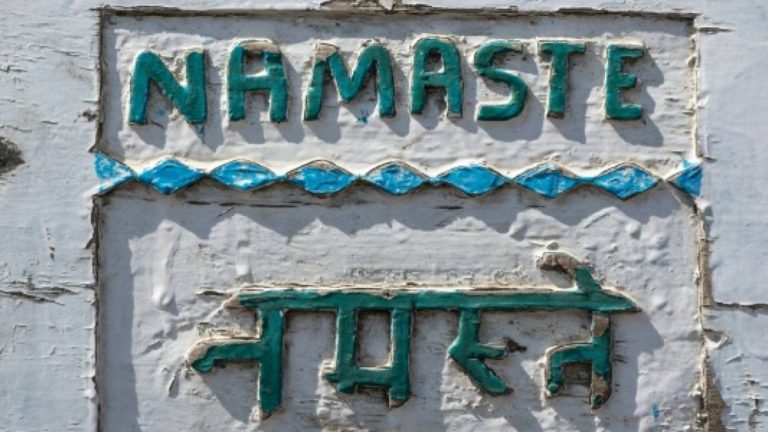
About 12 years ago, I double-parked and ran into an Indian food restaurant located in a strip mall in my hometown. I’d had an incredibly long day at work and was craving comfort food and my sofa. When I blazed through the door, I was greeted by a man who stood about the height of my chin. He was the host, the cook, the waiter, and, as I quickly learned, he was also the owner.
He met my cyclone of an entry with a steady kind gaze, and then simply pressed his palms together at his heart, and with a slight reverent bow, said “Namaste.” I had heard the word before, of course, but that moment was different. In that second I felt as though I had just been handed the Nobel Peace Prize. Simply for being me.
I felt seen in a way I never had. Not even by my family or friends or anyone I’d ever dated.
That feeling was created by that single word and his authentic gesture. It transformed not only my day, but also my belief in the power we all have to influence one another with our words, actions and presence. My craving for chutney had somehow ignited my investigation into the history of Namaste.
The Meaning of Namaste
Namaste is a Sanskrit word comprised of the root words “namah” and “te”. The meaning of namah, as described by Wikipedia, means “bow” and “reverential salutation or adoration”. It also means “obeisance” – not a word you may be tossing around with your homies, which means “a movement of the body expressing deep respect or deferential courtesy; a bow, curtsy, or other similar gesture”. The word “te” means “to you”. The “s” links the two words according to the grammatical rules in the language of Sanskrit, so that the sounds of the letters flow with one another. Hearing the resonance of these cohesive sounds shows how and why the language of Sanskrit is precisely aligned with the practice of yoga.
Do I Have to Bow When I Say Namaste?
Like a stiff new pair of jeans, beginning the practice of saying the word Namaste and/or holding your hands at prayer and bowing can feel really uncomfortable. For many born and raised in the western world, there is no cultural equivalent to the practice of bowing. This practice, “pranama” in Sanskrit, means “to bow” or according to Paramahansa Yogananda, “this salutation, with the hands in position of prayer, is expression of reverence to God or to one in whom the Divine is manifested. You may say Pranam or Namaste. This joining of hands symbolizes the meeting of two souls. Bowing down and joining hands symbolizes humility.”
Since Namaste literally means “bowing to you”, it’s a good idea to do just that. Otherwise, it’s as if you proclaim to really like someone while maintaining a poker face. Incorporating the action of bringing your hands to your heart, followed by a slight bow, authenticates the meaning of Namaste.
To Namaste or Not to Namaste
Beyond cultural bounds exists the universality of people greeting one another. Of course you can shake hands, hug, bow or extend a salutation in other ways. But a good Namaste goes a long way.
One of the things I’ve learned as a professional writer is: it’s not just the words we choose that matter, it’s how we use them and if we know what they mean that matters. Words have history, and every word we use carries it’s history with it. Namaste is often interchanged with Namaskar in parts of India and beyond. In ancient scriptures, such as the Taittiriya Upanishad, the practice of extending courtesy, honor and hospitality is expressed equally to guests and deities. It’s referred to as “Atithi Devo Bhav”, which translates to mean ‘the guest is god’. There are 16 forms of reverence used in “Pujas”, or ceremonies, in any place in which formal worship occurs. Namaste is one oform.
As a word and gesture, Namaste has a wide range of uses that can extend along the spectrum of meaning: Namaste or namaskar is used as a respectful form of greeting, acknowledging and welcoming a relative, guest or stranger. It is used with goodbyes as well. Namaste can be used to for both the recipient of a kind deed or favor, as well as by the one extending the giving. The use of Namaste is growing: it is widely used throughout India, Nepal, parts of Asia and beyond. It is often used in yoga studios and spiritual communities throughout the western world.
However, the word itself is incomplete without a connection to the person you are saluting. Eye contact and stopping to acknowledge and bow are equally important.
Namaste is about creating and honoring connection and exuding respect.
As Rodney Yee and Colleen Saidman Yee reflect in Yoga Talks: Why do we say Namaste, “Namaste is used as an expression of respect. The deepest part of me sees and honors the deepest part of you.” They go on to explain that it is a powerful word yet is also familial.
As the word Namaste travels West, it continues to morph into meaning many things to many people. Technically, can I say it to the guy who rotates my tires? The sweet lady who lets me go ahead of her to pay for my groceries? Of course. But it’s more commonly used in situations in which people share a similar view of spiritually or, as in the case with my quest for Chutney years ago, used by people steeped in traditions that teach seeing beyond the exterior to a person’s essence.
That said, I begin each and every yoga and Sanskrit class that I teach with Namaste.
Even when I’m teaching yoga on stand-up paddleboards in lakes, oceans and reservoirs. Regardless of the form of practice, I honor my teachers, and lineages of teaching by using the expression and bow of Namaste. But first I always take a breath. I’ve found for myself that a full conscious inhale and an equally conscious exhale helps to clear away any possible block to connect authentically with both the students present and what I’m about to teach.
How to Say Namaste
As both a teacher and student of Sanskrit for more than ten years, it’s my experience that, here in the U.S., Namaste makes the top ten list for Most Commonly Mispronounced Sanskrit Words.
It does not rhyme with Nescafe; Namaste is a three-syllable word. The emphasis is often incorrectly placed on the first syllable, and erroneously pronounced like ‘nom’. The correct pronunciation phonetically is nuh-mUH-st-hey with the emphasis on the second syllable. In Sanskrit, the ‘a’ sound is pronounced like the English ‘u’ or ‘uh’as in Muenster cheese. There’s a tiny pause, I call it a ‘prana pocket’ that exists just after the second “a” in Namaste, followed by “stay” which, in Sanskrit, sounds like you’re directing your dog to sit. The “t” in Sanskrit is created by placing your tongue in between your upper and lower front teeth, biting down slightly, then pulling your tongue straight towards the back of your throat.
It can feel strange, I know. Practicing that over and over, much like making the shape of Warrior 2 with our bodies, is like washing that new pair of jeans until they fit like you’ve worn them for a decade.
Your Own Private Namaste
One of my Sanskrit teachers gave me some of the best advice for getting comfortable with pronouncing and relating to the names of the postures (asanas) in Sanskrit: “you’ve got to date your asanas… in order to build familiarity, we need to spend time together. It’s no different with relating to the practice of yoga.” There’s no need to light candles and spread rose petals, although if that’s your jam, please go ahead. I’m simply suggesting that, rather than a drive through kind of connection; we spend some quality time with Namaste.
Five Ways to Embody Namaste
Choose Your Context
Try saying Namaste to people practicing next to you in a yoga class or to the cashier at the grocery store.
Look the Other Person in the Eye
In order to recognize the spark of divinity in someone, you must look.
Reverent Gesture
Bring palms to touch at your heart.
Correct pronunciation
Pronunciation phonetically is nuh-mUH-st-hey, with the emphasis on the second syllable.
Bow
It’s not bobbing your head and it’s not full prostration; keep your eyes up and see your gesture all the way through.
We participate in this ancient practice steeped in cultural history because it shows that we value each other, that you could literally turn someone’s day, week or life around in an instant. Exactly like that kind man in the Taste of India restaurant did so many years ago. He bowed to a part of me that I hadn’t yet recognized within my self. In order to see it in myself, I had to forge a relationship with Namaste. If you are going to use this powerful word, explore its meaning.




